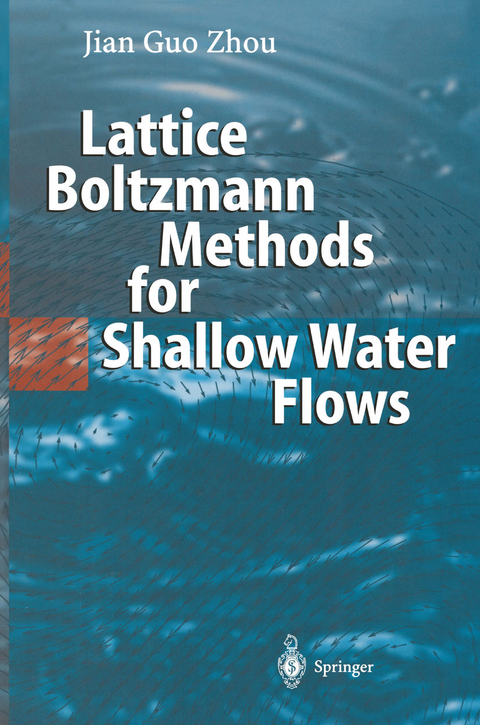
Lattice Boltzmann Methods for Shallow Water Flows
Springer Berlin (Verlag)
978-3-642-07393-9 (ISBN)
Dr. Jian Guo Zhou graduated from Wuhan University with first degree in River Mechanics and River Engineering and subsequently finished his MSc in Hydraulics and Fluvial Mechanics at Tsinghua University. He received his PhD in Fluid Mechanics from Leeds University. Since then, he has been working in computational fluid dynamics. His representative contributions are the surface gradient method for the treatment of the source terms in shallow water equations, the elastic-collision scheme for slip/semi-slip boundary conditions for lattice Boltzmann methods, the centered scheme for the force terms in the lattice Boltzmann equation, and lattice Boltzmann methods for shallow water equations with or without turbulence modelling.
1 Introduction.- 2 Shallow Water Flows.- 3 Lattice Boltzmann Method.- 4 Force Terms.- 5 Turbulence Modelling.- 6 Boundary and Initial Conditions.- 7 Applications.- A LABSWE on Hexagonal Lattice.- B LABSWE Code.- B.1 LABSWE Module.- B.2 An Example.- References.
From the reviews:
"The book describes the lattice Boltzmann method for shallow water flows with or without turbulence. ... The book demonstrates important recent advances in computational fluid dynamics and can be used as an invaluable reference for scientists and engineers, and as a textbook for graduates in engineering sciences such as coastal, civil and environmental engineering." (Felix Kaplanski, Zentralblatt MATH, Vol. 1052, 2005)
| Erscheint lt. Verlag | 14.10.2010 |
|---|---|
| Zusatzinfo | XI, 112 p. |
| Verlagsort | Berlin |
| Sprache | englisch |
| Maße | 155 x 235 mm |
| Gewicht | 215 g |
| Themenwelt | Naturwissenschaften ► Geowissenschaften ► Geologie |
| Naturwissenschaften ► Geowissenschaften ► Geophysik | |
| Schlagworte | Environment • flow turbulence • hydrogeology • shallow water flows • Turbulence • Water • Water Quality and Water Pollution |
| ISBN-10 | 3-642-07393-X / 364207393X |
| ISBN-13 | 978-3-642-07393-9 / 9783642073939 |
| Zustand | Neuware |
| Informationen gemäß Produktsicherheitsverordnung (GPSR) | |
| Haben Sie eine Frage zum Produkt? |
aus dem Bereich


